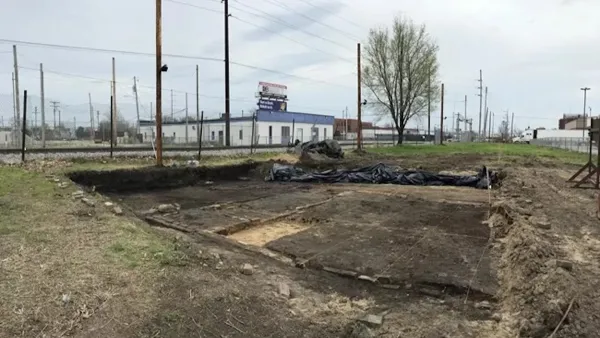Clare Foran unravels the relationship between misguided '70s-era planning efforts and ongoing racial tension in France.
A small town not far from the northern coast of France, Val-de-Reuil was established as one of nine New Towns intended to transform the overcrowding and suburban sprawl that plagued French cities in the late '60s and early '70s. Forty years on, however, it has yet to deliver on its promises.
"Today it’s one of the poorest cities in France," writes Foran, who formerly taught English there. "Rows of four and five-story, low-rent apartment complexes line the streets with balconies jutting out from their concrete facades... There is no discernible city center. The architecture of the buildings is modern, but not cutting edge and the city has a stark, uniform look to it. In a country that prides itself on history and tradition, Val-de-Reuil seems out of place – a town of boxy, geometric construction in the middle of the French countryside."
And while the reasons for its failure are worth considering (high unemployment due to industry-worker mismatch; a weak tax base due to socioeconomic segregation), more troubling is the way that such projects have reinforced racial tensions in a nation whose immigration policy is built on a platform of integration, "which calls for assimilation into French society, in speech, dress, culture, and custom."
"Val-de-Reuil isn’t a typical French town. To dismiss the city as an anomaly, however, would be a mistake. Val-de-Reuil embodies a central irony of French urban planning policy. City planners have built up isolated urban enclaves, like the Paris suburbs and the New Towns, which keep the country’s immigrant population separate from the rest of society, at the same time that the government calls for integration."
Foran recalls seeing these same tensions erupt in her own classroom, and hearing how minority children received them firsthand: "'You’re lucky that you live in the U.S.," [said one 12-year-old of Algerian descent]. 'Don’t you like living in France?' I asked. 'No,' he replied with grim certainty. 'People are racist here. They take one look and decide they don’t like you.'"
FULL STORY: How France Built Inequality Into Its Cities

National Parks Layoffs Will Cause Communities to Lose Billions
Thousands of essential park workers were laid off this week, just before the busy spring break season.

Retro-silient?: America’s First “Eco-burb,” The Woodlands Turns 50
A master-planned community north of Houston offers lessons on green infrastructure and resilient design, but falls short of its founder’s lofty affordability and walkability goals.

Delivering for America Plan Will Downgrade Mail Service in at Least 49.5 Percent of Zip Codes
Republican and Democrat lawmakers criticize the plan for its disproportionate negative impact on rural communities.

Test News Post 1
This is a summary

Test News Headline 46
Test for the image on the front page.

Balancing Bombs and Butterflies: How the National Guard Protects a Rare Species
The National Guard at Fort Indiantown Gap uses GIS technology and land management strategies to balance military training with conservation efforts, ensuring the survival of the rare eastern regal fritillary butterfly.
Urban Design for Planners 1: Software Tools
This six-course series explores essential urban design concepts using open source software and equips planners with the tools they need to participate fully in the urban design process.
Planning for Universal Design
Learn the tools for implementing Universal Design in planning regulations.
EMC Planning Group, Inc.
Planetizen
Planetizen
Mpact (formerly Rail~Volution)
Great Falls Development Authority, Inc.
HUDs Office of Policy Development and Research
NYU Wagner Graduate School of Public Service





























